An adolescent or teenage girl is often described as a young person who is approaching womanhood. According to the World Health Organisation, an adolescent girl is between the ages of 10 and 19, a time when she is navigating puberty, discovering herself and her sexuality and all that makes her a woman. This is a time when she will be exploring with hopes, dreams, ambitions, and plans for her future. One thing that may not be in her immediate thoughts, is her sexual and reproductive health (SRH).
Adolescent pregnancy occurs when girls between the age of 10 to 19 get pregnant. It has become a global public health challenge in high, middle, and low-income countries. Every year, an estimated 21 million girls aged 15–19 years in developing regions become pregnant and approximately 12 million out of these give birth. These pregnancies are more likely to occur in marginalised communities, commonly driven by poverty, lack of education and employment opportunities.
According to the 2018 Nigeria Demographic and Health Survey (NDHS), 19% of teenage women begin sexual intercourse by age 15 and 57% by age 18. By age 20, 7 out of 10 women have had sexual intercourse. Also, 19% of teenage women aged 15–9 have begun childbearing, 14% have given birth, and 4% are pregnant with their first child.
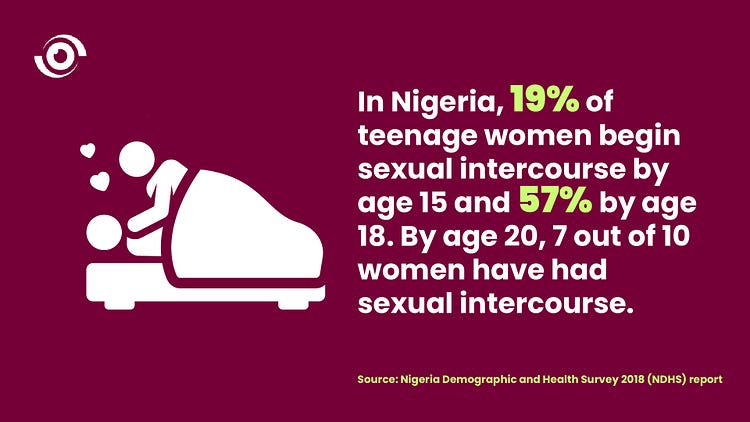
The role of parents
Parents are less likely to tell their child, “Don’t have sex, but if you must, use protection.” Cultural practices, intergenerational gaps and the taboo surrounding discussions about sexual and reproductive health often means that young people are influenced by discussions with their peers when making decisions about their sexual activity. This results in knowledge gaps about safe sex and contraceptive use, leaving adolescents often ill-equipped to make informed decisions about their sexual health.
Studies have shown that adolescents who had no open discussion or communication on sexual and reproductive health issues with their parents were more likely to have unsafe sex, which could lead to an unintended pregnancy. Adolescents who want to avoid unintended pregnancies may therefore not have access to the information they need, leading to ill-informed choices and misconceptions about their sexual health. Therefore, the need for SRH information and services for adolescent girls is high. In Sub-Saharan Africa alone, 40% of girls and young women have an unmet need for contraceptives and aren’t able to access them. They are often faced with the problem of not knowing where to obtain contraceptives, what options are available and how to use them. Health worker bias and unwillingness to acknowledge adolescents’ sexual health needs, and adolescents’ own inability to access contraceptives because of knowledge gaps may lead to an unintended outcome of an unplanned pregnancy.
A great deal of work has gone into improving the contraceptive prevalence rate among young people, and to reduce the adolescent unintended pregnancy rate. However, progress has been slow. Cynthia Ihesie, an SRH advocate who has taken her advocacy to rural communities, secondary and primary schools, and correctional centres targeting teenagers and young women, says the main issue is a lack of access to contraceptives, information gaps and the fear of judgement. She mentioned that because the term “family planning” is used, young people think contraceptives are for married people and something they should not concern themselves with until they get married. “A young girl is not thinking of having a family, so, when you call it family planning, she thinks it’s not for her,” she said.
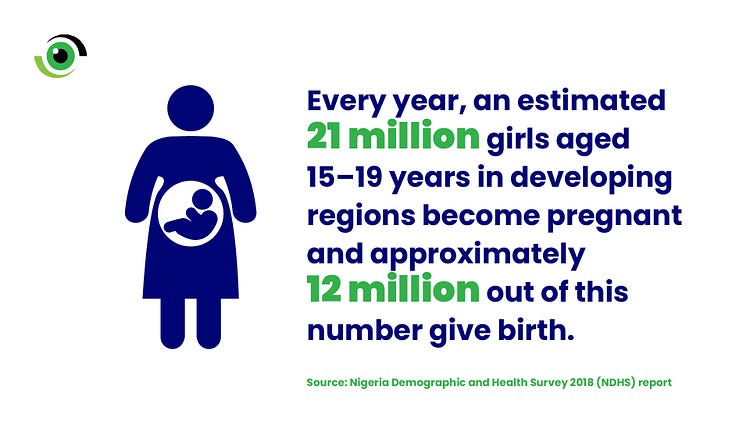
In 2016, Society for Family Health (SFH) and Population Services International (PSI) started implementing Adolescent 360, a four year project funded by the Bill & Melinda Gates Foundation (BMGF) and the Children’s Investment Fund Foundation (CIFF). The project was implemented in Nigeria, Tanzania and Ethiopia with the aim of improving the sexual and reproductive health of adolescent girls aged 15 -19 years and increasing the modern contraceptive prevalence rate in each of the countries.
Joy Ede, Assistant Manager of the Adolescent 360 project in SFH, pointed out that, “We knew sexual reproductive health was low and there were very poor health outcomes, especially when it comes to SRH issues among that age group, but we needed to understand the perception of the target audience towards SRH and their attitude towards it.” So, they employed a human-centred design approach which enabled them to work with the people for whom they were designing the intervention. Adolescent girls rarely have a say in matters related to their own health, but with this approach, they were put at the centre and involved in the process from the beginning.
Their findings validated Ihesie’s view as they also learnt that the girls believed family planning was for married women and not for them. To mitigate this, they started using the term ‘contraception’ instead. They found out that the general belief was that any girl using contraceptives was promiscuous. Therefore, a lot of girls were not openly seeking contraceptives to avoid the stigma around it. Another issue they discovered was the unwillingness of service providers to serve unmarried girls because the perception would be that they were promoting promiscuity. They also found out that there was a difference between what works for adolescent girls in the north of Nigeria and adolescent girls in southern Nigeria. The Adolescent 360 project therefore saw the need to create two different programmes.
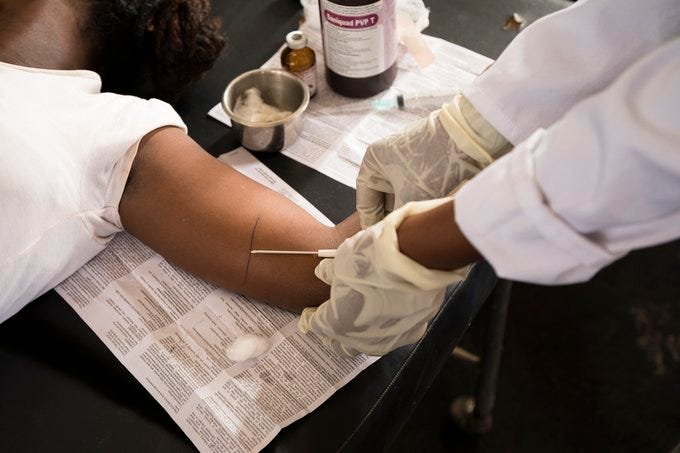
For unmarried adolescent girls, they designed ‘9ja Girls’, a programme that combines walk-in one-to-one contraceptive counseling with life-skills sessions for unmarried girls. There, the girls hear about the programme from paid mobilisers, their friends, or their mothers. They can choose to drop in to a ‘Life, Love and Health’ (LLH) class or go directly to the clinic for a walk-in appointment. The LLH classes teach girls life and vocational skills, encouraging them to think about their future, and discuss how contraceptives may help them achieve their goals. The classes also include an ‘opt-out moment’ in which all girls get the chance to see a service provider one-on-one, to reduce stigma. After a girl adopts a contraceptive, which she can get on the spot for free, service providers follow up with phone calls to remind them of future appointments and check how they are doing.
To achieve this, the project had initially set up in the youth-friendly centres supported by United Nations Population Fund (UNFPA) in the past, but there were a few challenges. These centres were few and set up in state capitals and urban communities but were hardly found in rural areas or sub-urban areas where the girls with the most unmet need lived. Besides, because there were games in the centres, it was a popular hangout for teenage boys too, so mothers did not feel comfortable having their daughters go there. In addition, the centres only gave out condoms and there was no trained provider that could offer contraceptives beyond condoms.
To address this, the Adolescent 360 project prototyped a few girls-only centres. They set up counselling and service delivery points, however the counselling and service delivery sessions were not timed closely together and while waiting to be attended to, some girls left. This phase of the project taught them a few lessons, according to Ede. They needed to put both counseling and service delivery in one space and needed someone that would be there to serve the girls as they come, to reduce waiting times. They had learnt that some girls preferred a young provider because they believed a young person would understand their needs and some others said that they preferred older providers as they were more experienced.
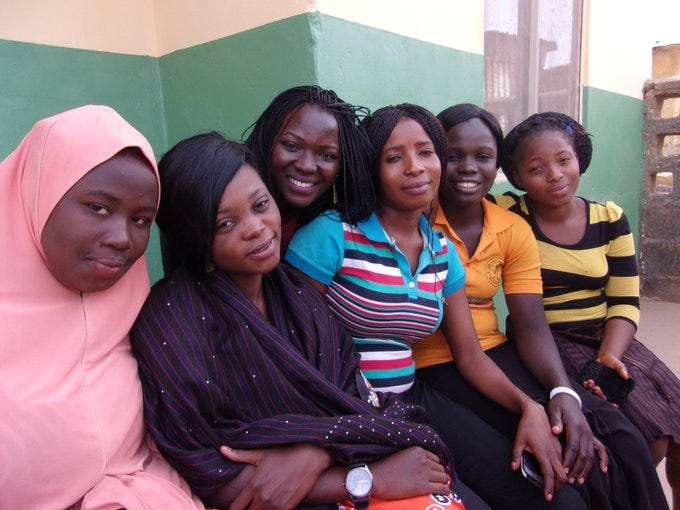
Remarking on the prototyping phase, Ede said, “One important lesson this phase taught us was that the cost of setting up these centres was high. We began to explore facilities that were closer to the people and that was when we started working with Primary Health Centres (PHC). PHCs are everywhere and they are accessible because they are close to the people, and they are equipped to provide more than condoms.”
The PHCs were short staffed so in addition to the experienced government provider who oversees the facility, the project engaged young people who had just completed their nursing education or its equivalent, to provide the necessary services. The providers were trained to provide youth friendly counselling and modern contraceptive methods like implants, IUDs and injections. This helped reduce waiting time for the girls as there was now always someone on standby to counsel and serve them.
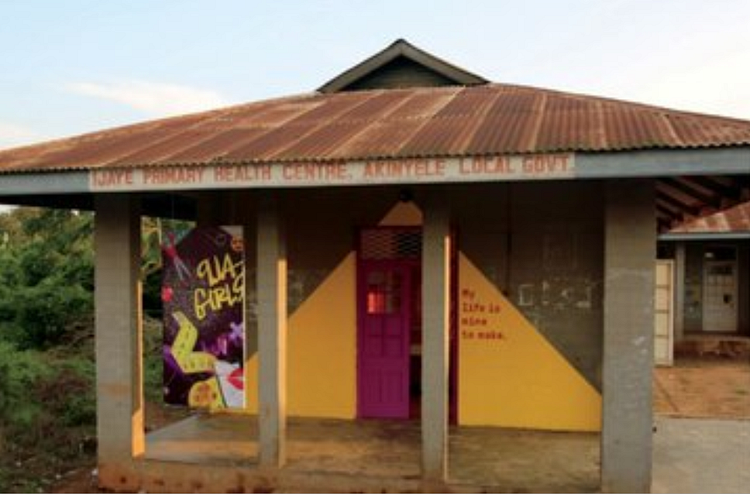
As a young lady, I was never made to feel like I could approach an adult to talk about sex, so my friends and I, all of us ignorant teenagers, could only depend on hearsay to answer our many questions, with no credible way of verifying if the information was true. The Adolescent 360 project is helping to bridge the access and information gap and fear of judgement. It is providing adolescent girls with the necessary education, encouraging them to think proactively about making informed decisions. It is also giving them much needed access to services and support.
There are many more organisations and interventions being implemented in the SRH space in Nigeria that have recorded varying degrees of success. Adolescent 360’s human-centred design approach helped create a project that is meeting the SRH needs of adolescent girls across the country, putting them front and centre of the intervention, ensuring that they are heard and listened to, and in doing so, they are able to be active participants. The learnings from this and other interventions should be replicated and upscaled across the country to help ensure that young adults are more informed about their sexual and reproductive health, are practicing safe sex, reducing their chances of contracting sexually transmitted diseases (STDs) and unintended pregnancies. This will help foster a youth population that is better able to live out their dreams and aspirations.


Very useful and timely article!!!.
Keep up the excellent work.
Dr. Sampson Ezikeanyi, MD, MPH, PhD